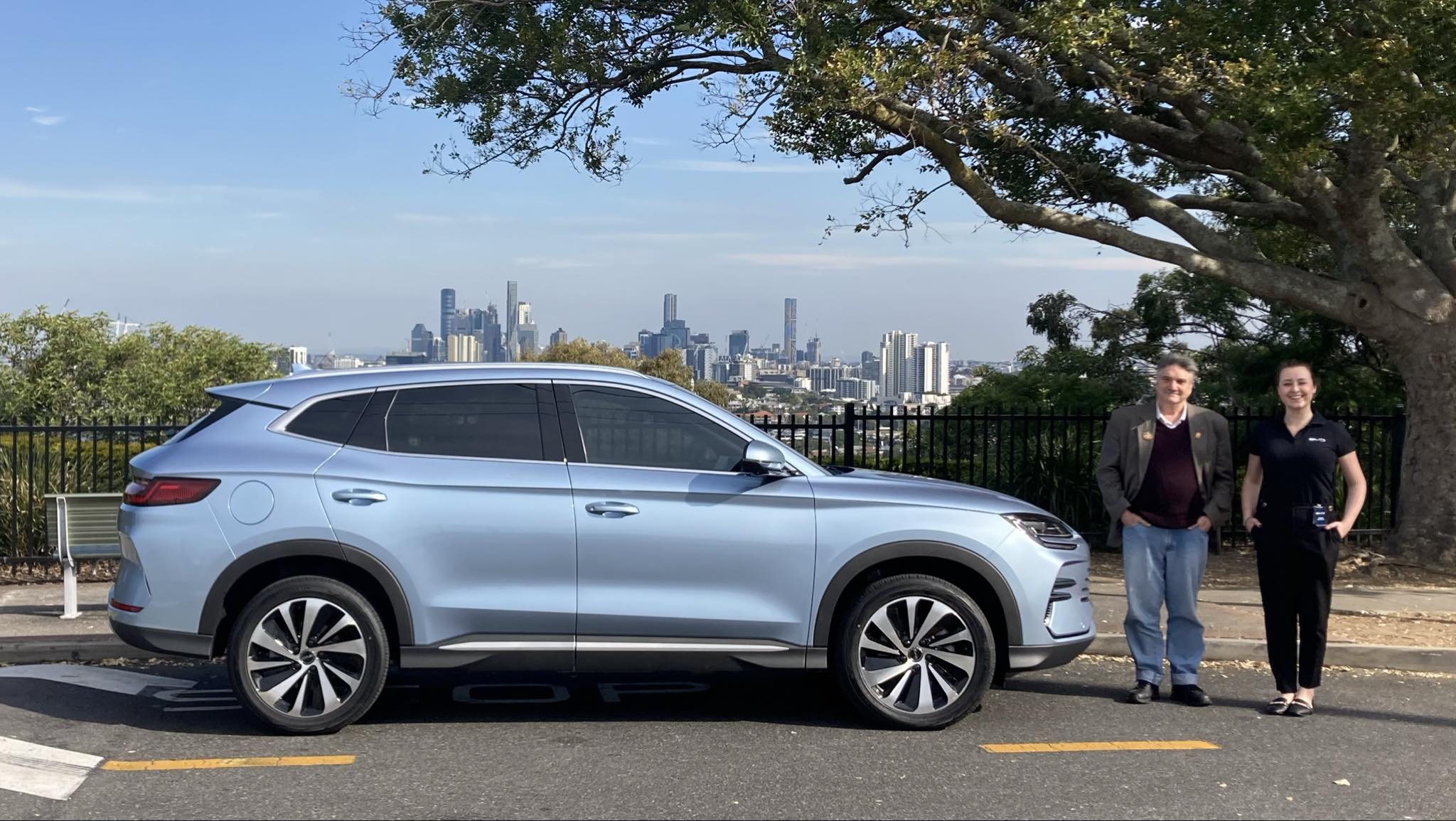Sign up for daily news updates from CleanTechnica on email. Or follow us on Google News!
Will they or won’t they? According to some industry stakeholders, a solid-state battery for electric vehicles will be ready to hit the road within the next few years. Others say it will take another 10 years or longer. The US startup QuantumScape is in the first camp, and it has just passed another goalpost in its quest for a roadworthy solid-state battery.
QuantumScape Ships Alpha-2 Prototype Solid-State Battery
To be clear, QuantumScape’s battery is not solid throughout. The key to the technology is an anode-free manufacturing process, in which the cell is fabricated in a discharged state. The anode assembles itself during its first charging cycle.
The anode is paired with a proprietary ceramic separator, which accounts for the solid end of things. The cathode gets a different treatment. It is paired with its own catholyte, in the form of an organic liquid electrolyte. QuantumScape makes the case that it is difficult to engineer a single material suitable for both the anode and the cathode, and that a liquid catholyte is “better suited for the voltage and transport requirements of the cathode.”
The latest news from QuantumScape involves the Alpha-2 prototype version of its forthcoming QSE-5 battery for electric vehicles. The prototype sequence began back in 2022 when QuantumScape shipped its 24-layer A0 prototypes to its customers for testing.
Skipping ahead to Alpha-2, QuantumScape reduced the number of layers to six while increasing the energy density factor, to provide its customers with an additional testing opportunity before moving on to the next phase.
“This [the higher energy density] is primarily due to higher-loading cathodes (i.e., packed with more active material) and more efficient packaging that optimizes the materials and space within the cell,” QuantumScape explained in a press statement.
QuantumScape lists “tighter internal margins, thinner current collectors, and a slimmer design” among the packaging improvements.
Next Steps For The Solid-State Battery Of The Future
The point of the Alpha-2 exercise is to enable QuantumScape’s customers to put the new battery through a laboratory testing regimen, aimed at providing feedback on performance and reliability. QuantumScape is already looking ahead to the next step in the prototype sequence, labeled QSE-5 B0.
“While Alpha-2 prototypes are being tested in customer labs, QuantumScape is working to integrate those component-level improvements into the planned QSE-5 cells, which will consist of 24 layers and use electrolyte-separators produced using the faster Raptor equipment and process,” the company explains.
As described by QuantumScape president and CEO Dr. Siva Sivaram, the rapid cycling of prototypes and feedback will help make the solid-state battery happen sooner rather than later.
“The faster we can get new product iterations into customers’ hands, the faster we get to production,” he stated, noting that QuantumScape expects to begin manufacturing the first QSE-5 cells later this year.
What’s All This About Raptors?
If you caught that thing about Raptor equipment and processes, that’s another element that could help QuantumScape shorten the line between its prototypes and full scale commercial production.
Raptor is QuantumScape’s answer to one challenge for ceramic-based solid-state batteries, that being the separator heat-treatment part of the fabrication process.
“Heat treatment is one of the most cost-intensive parts of ceramics processing and is often the main bottleneck in terms of throughput,” QuantumScape explained in a letter to shareholders dated February 14 of this year. In the letter, QuantumScape also noted that its “Raptor” heat process is eight times faster than its former process and more energy efficient, while yielding superior results. The company anticipates that shortening the time of this step alone will provide for up to triple its former production capacity.
“Raptor also removes several other process steps entirely, eliminating material inputs that would otherwise introduce particle contamination,” QuantumScape adds.
QuantumScape began deploying Raptor late last year, and it is still in the process of ramping up the system this year. At full capacity, the system will handle enough throughput to enable low-volume production of the B0 version of QSE-5, which the shareholder letter affirms is slated for later this year. The B0 designation refers to a near-final version of the battery.
Also in the works is a successor system called Cobra Raptor, which QuantumScape describes as “first deployment of a disruptively faster separator heat treatment process” aimed at mass-producing a solid state battery at the gigawatt scale.
“First and foremost, the Cobra heat processing step is designed to be faster than Raptor by more than an order of magnitude, which dramatically improves throughput and energy efficiency,” QuantumScape elaborates.
Among other improvements, the Cobra iteration consolidates or outright eliminates several process steps, enabling it to handle an increased production capacity within a much smaller footprint than the Raptor.
 Chip in a few dollars a month to help support independent cleantech coverage that helps to accelerate the cleantech revolution!
Chip in a few dollars a month to help support independent cleantech coverage that helps to accelerate the cleantech revolution!
The Long Road To The Solid-State EV Battery Of The Future
Don’t break out the champagne just yet. QuantumScape cautions that Cobra is still a work in progress. The company is apparently satisfied with hitting its low-volume target for 2024 while it brings Cobra up to speed.
QuantumScape certainly has come a long way since January of 2015, when we noted that its solid-state battery had come to the attention of Volkswagen, which was prowling around for longer-range EV batteries (see our complete QuantumScape archive here).
Even as recently as 2021, QuantumScape was still testing single-layer battery cells.
More recently, things seem to be moving along at a rapid clip. In January of 2023, for example, Volkswagen reported that its PowerCo branch tested the 24-layer A0 version of the solid-state battery, noting that it “significantly exceeded the requirements in the A-sample test and successfully completed more than 1,000 charging cycles.”
“The next step on the way to series production is now to perfect and scale the manufacturing processes,” Volkswagen explained.
That sounds easy enough, though QuantumScape cautions that additional, extensive testing of the B0 prototypes at low-volume production is another midway step before the cells are ready for Cobra, which will be up and running sometime in 2025 if all goes according to plan.
“We are already operating prototype versions of Cobra heat-treatment equipment, and in light of the promising data from our prototype equipment and the significant advantages of Cobra as a pathway to gigawatt hour-scale production, we have prioritized bringing Cobra into production as soon as possible to support higher volumes of QSE-5 in 2025,” QuantumScape explained.
The QuantumScape Difference
QuantumScape might be among the first solid-state battery innovators to get a product on the road, but there will be plenty of competition ahead, and semi-solid technology is also pushing its way into the picture.
The company anticipates that its battery will stand out from the crowd, with its proprietary ceramic separator and a unique anode-free initial architecture.
Targets for the new battery include a fast charge, from 10% to 80%, in less than 15 minutes and a longer lifespan, both enabled by the elimination of the anode.
No word yet on the cost, though QuantumScape expects to gain an edge on materials and manufacturing expenses with the self-forming anode, as well as savings related to the earth-abundant materials used in the ceramic separator.
Follow me @tinamcasey on Bluesky, Threads, Post, and LinkedIn.
Image: Mock-up of a QuantumScape QSE-5 solid-state battery for electric vehicles (courtesy of QuantumScape).
Have a tip for CleanTechnica? Want to advertise? Want to suggest a guest for our CleanTech Talk podcast? Contact us here.
Latest CleanTechnica TV Video
CleanTechnica uses affiliate links. See our policy here.





